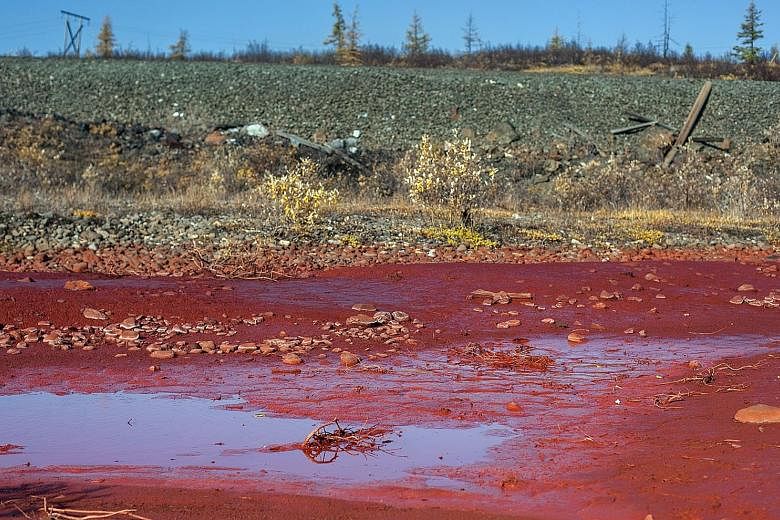MOSCOW • A river in the far north of Siberia turned bright red this week, residents said, leading Russians to nickname the tributary the "blood river".
A ministry said it was investigating a possible leak of industrial waste, but had not determined what caused the discoloration.
One hint at the possible cause is the path the river, the Daldykan, takes past the Norilsk Nickel mine and metallurgical plant, by many measures one of the world's most polluting enterprises.
The plant belches so much acid-rain-producing sulphur dioxide - 2 million tonnes a year, which is more than what is produced in all of France - that it is surrounded by a dead zone of tree trunks and mud about twice the size of Rhode Island.
The metal smelters in this ore-rich region produce copious amounts of copper, one-fifth of the world's nickel - a key alloy in stainless steel - and half of the global supply of palladium, a precious metal nearly as valuable as platinum.
The ore also contains iron, but that red-hued element is far less valuable than the precious metals extracted along with it, and is generally discarded in slurry ponds.
That iron slurry is the most likely source of the discoloration in the "blood river", environmental groups and Russian regulators said, attributing the red hue to iron oxide, better known as rust.
That possibility gained credence on Wednesday when the Ministry of Natural Resources issued a statement saying that "preliminary information of a possible cause of the pollution of the river is a rupture of a slurry pipe at Norilsk Nickel".
If so, while certainly shocking, the red water would be mostly harmless to humans, said Mr Vladimir Chuprov, a researcher with Greenpeace in Russia.
High concentrations could be fatal to fish. The slurry could be potentially more dangerous than it appears if it also contains traces of heavy metals created by the Norilsk smelters, which could damage the fragile Arctic environment, Mr Chuprov said.
NEW YORK TIMES

